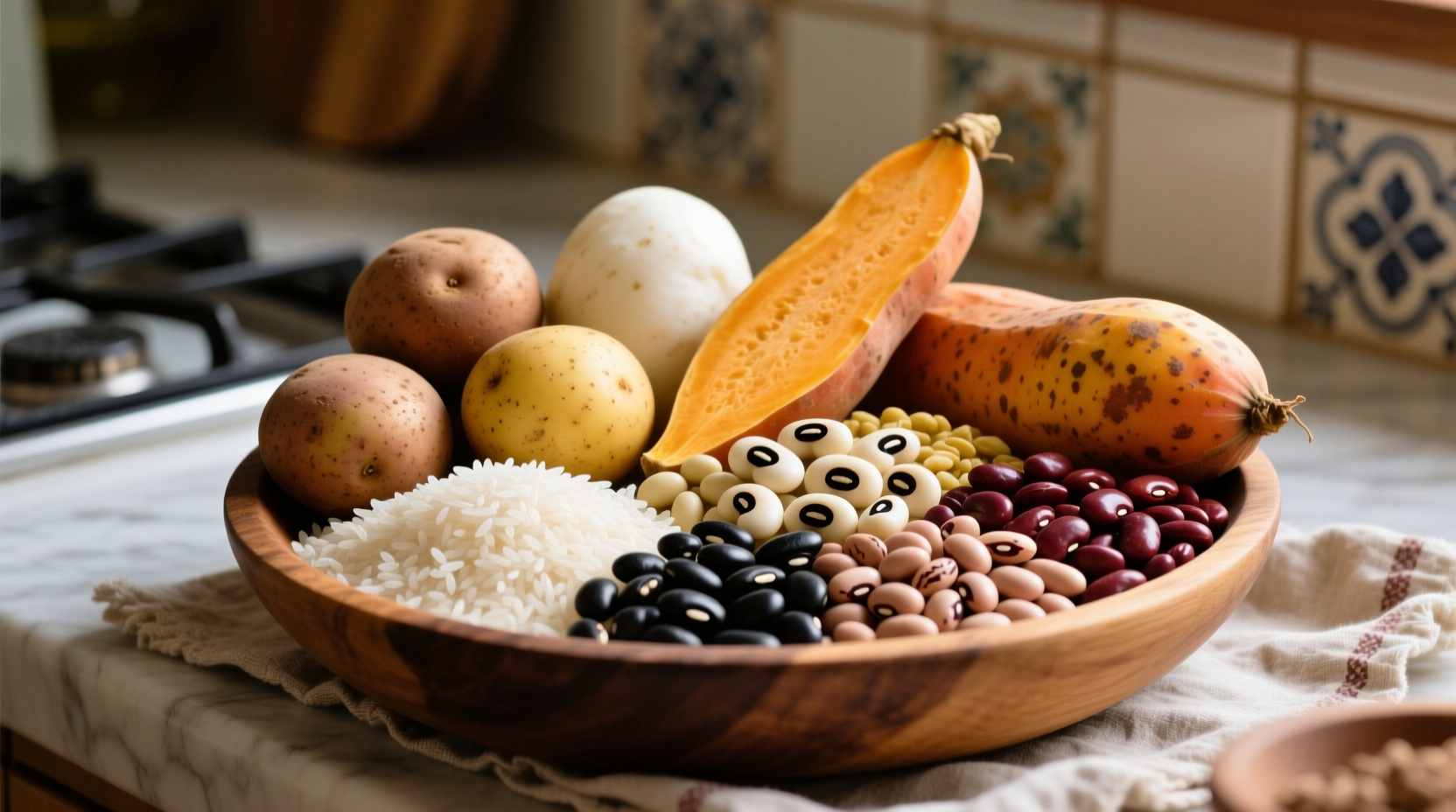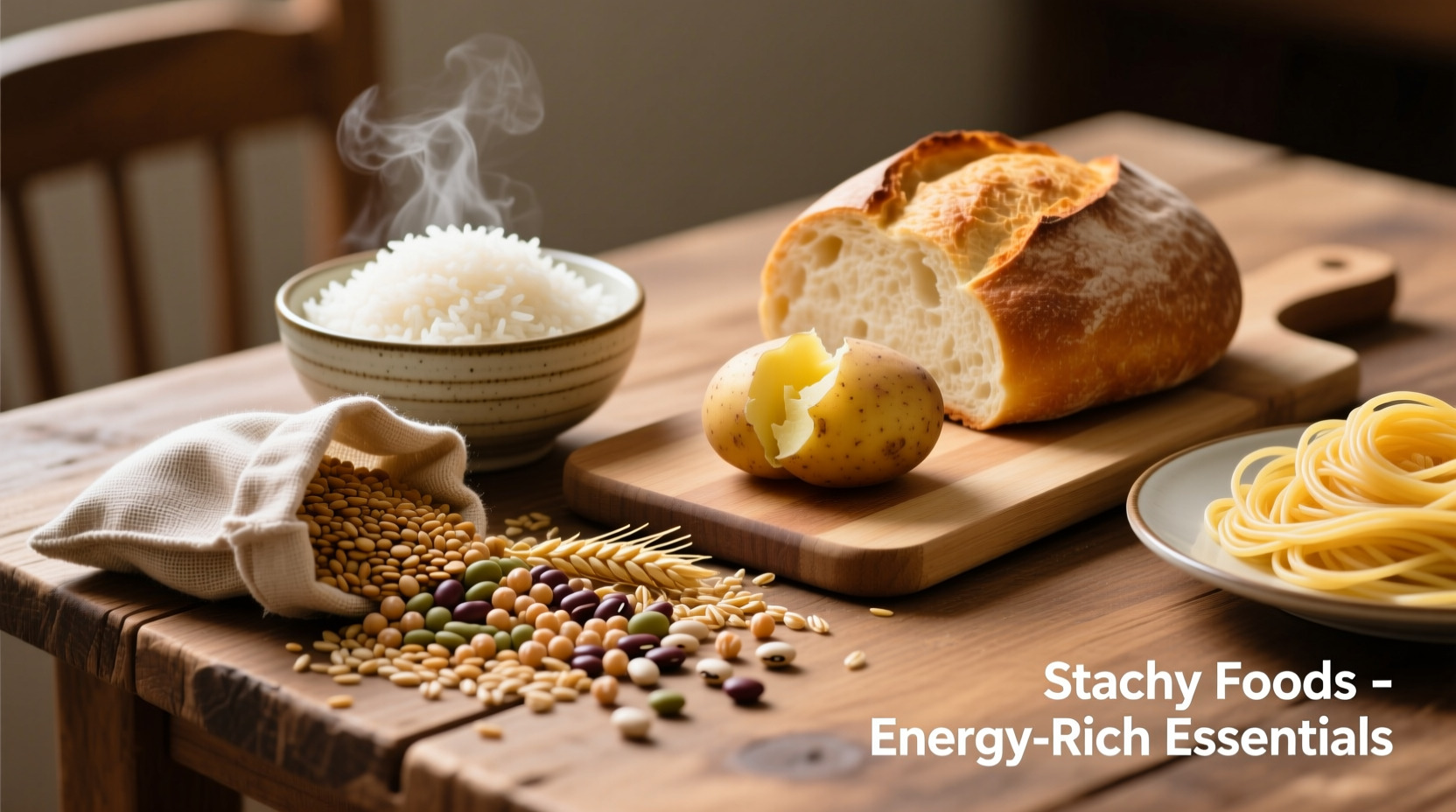Understanding Starch: The Science Behind Your Staple Foods
Starch is a naturally occurring polysaccharide, essentially a long chain of glucose molecules bonded together. Plants like grains, tubers, and legumes store energy as starch, which our bodies break down during digestion into glucose—the primary energy source for our cells. Unlike simple sugars that cause rapid blood sugar spikes, the complex structure of starch results in slower digestion and more sustained energy release.
According to research from the USDA Food and Nutrition Information Center, starch makes up 70-80% of the dry weight in staple crops like wheat, rice, and potatoes. This biological energy storage mechanism has made starchy foods fundamental to human diets for thousands of years across virtually all cultures.
Common Starchy Foods: Categories and Examples
Starchy foods fall into several major categories, each offering unique nutritional profiles and culinary applications. Understanding these categories helps you make informed dietary choices while enjoying diverse flavors and textures.
| Category | Common Examples | Starch Content (per 100g raw) | Nutritional Highlights |
|---|---|---|---|
| Grains | Rice, wheat, oats, barley, quinoa | 70-80g | High in B vitamins, fiber (especially whole grains), iron |
| Tubers | Potatoes, sweet potatoes, yams, cassava | 15-25g | Rich in potassium, vitamin C (especially with skin), fiber |
| Legumes | Beans, lentils, chickpeas, peas | 40-60g | Excellent protein source, high fiber, iron, folate |
| Other | Corn, plantains, taro | 20-30g | Variety of vitamins and minerals depending on type |

Starchy vs. Non-Starchy Foods: Making the Distinction
Understanding the difference between starchy and non-starchy foods is crucial for balanced meal planning. While all vegetables contain some carbohydrates, starchy vegetables contain significantly more carbohydrates and calories than non-starchy varieties.
The Academy of Nutrition and Dietetics explains that starchy foods typically contain 15 grams or more of carbohydrates per serving, while non-starchy vegetables contain less than 5 grams per serving. This distinction matters for people managing blood sugar levels or specific dietary requirements.
Common misconceptions include classifying tomatoes or cucumbers as starchy (they're not), while overlooking that winter squash varieties like butternut and acorn are indeed starchy. This categorization isn't about healthfulness—many starchy foods offer exceptional nutrition—but rather about understanding their carbohydrate contribution to your diet.
Nutritional Value of Starchy Foods: Beyond Carbohydrates
While starchy foods are primarily known for their carbohydrate content, they offer much more nutritional value when consumed in their whole, minimally processed forms. Whole grains retain their bran and germ, providing significant fiber, vitamins, and minerals that refined versions lack.
Research from the Harvard T.H. Chan School of Public Health indicates that replacing refined grains with whole grains can reduce the risk of type 2 diabetes, heart disease, and weight gain. The fiber in whole starchy foods helps maintain stable blood sugar levels, supports digestive health, and promotes satiety.
The glycemic index (GI) varies significantly among starchy foods. For example, sweet potatoes generally have a lower GI than white potatoes, meaning they cause a slower rise in blood sugar. Cooking methods also affect GI—cooled potatoes develop resistant starch, which has additional digestive benefits.
Practical Guidance for Including Starchy Foods in Your Diet
Starchy foods can be valuable components of a healthy diet when approached thoughtfully. Here's how to maximize their benefits:
Portion Awareness
A standard serving of starchy food contains about 15 grams of carbohydrates. Visual guides can help with portion control:
- Cooked grains or starchy vegetables: 1/2 cup (about the size of a tennis ball)
- Whole grain bread: 1 slice
- Cooked legumes: 1/3 cup
Preparation Methods Matter
How you prepare starchy foods significantly impacts their nutritional value:
- Boiling with skin on: Retains more nutrients in potatoes and other tubers
- Cooling after cooking: Increases resistant starch content in potatoes and rice
- Minimal processing: Choose whole grains over refined versions whenever possible
- Balanced combinations: Pair starchy foods with protein and non-starchy vegetables for balanced meals
Dietary Considerations
Different dietary approaches handle starchy foods differently:
- Mediterranean diet: Includes moderate portions of whole grains and legumes
- Diabetes management: Focuses on portion control and low-GI starchy options
- Athletic nutrition: Strategically uses starchy foods for energy replenishment
The World Health Organization recommends that carbohydrates (primarily from whole grains, legumes, fruits, and vegetables) should make up 55-75% of total daily energy intake, with an emphasis on complex carbohydrates over simple sugars.











 浙公网安备
33010002000092号
浙公网安备
33010002000092号 浙B2-20120091-4
浙B2-20120091-4